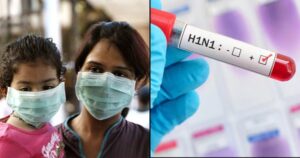
H1N1 Influenza (Swine Flu): Symptoms, Causes, Prevention, and Treatment
Meta Description:
Discover everything you need to know about H1N1 (Swine Flu) — its symptoms, transmission, causes, prevention tips, and treatment options in this complete guide.
What is H1N1 Influenza?
H1N1 influenza, also known as swine flu,it is a disease of respiratory system caused by a subtype of the influenza A virus. this is detect first time in human being in 2009 and very fast spread globally, leading to a pandemic. Today, H1N1 is considered a seasonal flu strain and continues to circulate among humans.
History of the H1N1 Pandemic
In North America April 2009, health officials identified a novel flu virus. This virus contained genetic elements from human, avian (bird), and swine (pig) influenza viruses. By June 2009, the World Health Organization (WHO) officially declared a global pandemic.
The H1N1 virus affected millions worldwide, but most cases were mild. However, it posed a greater risk to pregnant women, young children, the elderly, and people with underlying health conditions.
H1N1 Symptoms
H1N1 symptoms are similar to those of seasonal flu. Common signs include:
- Fever or chills
- Cough and sore throat
- Runny or stuffy nose
- Headache
- Body aches
- Fatigue
- Vomiting or diarrhea (less common)
Incubation period of Symptoms 1 to 4 days after exposure and can last up to a week.
How is H1N1 Transmitted?
H1N1 spreads from person to person mainly through respiratory droplets when someone coughs, sneezes, or talks. It can also spread by:
- Touching surfaces contaminated with the virus
- Then touching the mouth, nose, or eyes
Infected people with H1N1 are most contagious in the first few days after symptoms begin.
Who is Most at Risk?
While many people recover easily, some groups are at higher risk for severe illness:
- Children under 5
- Adults over 65
- Pregnant women
- People with chronic illnesses (asthma, diabetes, heart disease)
- Individuals with weakened immune systems
H1N1 Diagnosis and Testing
Doctors usually diagnose H1N1 based on a patient’s symptoms and health history. In some cases, lab tests such as RT-PCR (Reverse Transcriptase Polymerase Chain Reaction) are used to confirm the infection, especially in hospitals or during outbreaks.
Treatment Options for H1N1
Most H1N1 infections are mild and can be treated at home. Recommended steps include:
- Rest and hydration
- Over-the-counter medications to relieve fever and pain
- Antiviral medications like oseltamivir (Tamiflu) or zanamivir (Relenza), especially for high-risk patients
Antiviral drugs work best when taken within the first 48 hours of symptom onset.
Preventing H1N1 Infection
Prevention is the most effective way to stop the spread of H1N1. Here are key steps:
- Get Vaccinated – The seasonal flu shot includes protection against H1N1.
- Wash Hands Frequently – Use soap and water or hand sanitizer.
- Avoid Close Contact – Stay away from Infected person.
- Cover the mouth and nose when Coughs and Sneezes come – Use a tissue and clothes or your elbow.
- Stay Home When Sick – Prevent spreading the virus to others.
Long-Term Impact of H1N1
Since 2010, H1N1 has become one of the seasonal flu strains. It continues to circulate, but thanks to annual vaccines and improved public health awareness, its threat is now manageable.
The 2009 H1N1 pandemic also served as a learning experience for global health systems, improving flu surveillance, vaccine development, and emergency response strategies.
Final Thoughts
H1N1 influenza, though no longer a global emergency, remains a part of the annual flu season. Staying informed, getting vaccinated, and following basic hygiene practices are your best defenses. If you or a loved one shows flu symptoms, especially in a high-risk group, seek medical advice promptly.
This Article:
- H1N1 virus
- Swine flu symptoms
- H1N1 flu prevention
- Causes of H1N1
- H1N1 treatment
- Influenza A H1N1